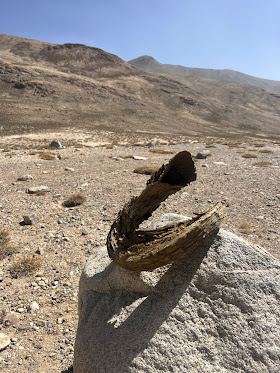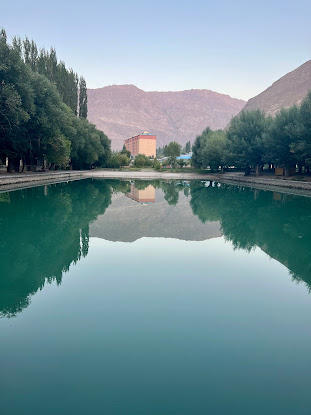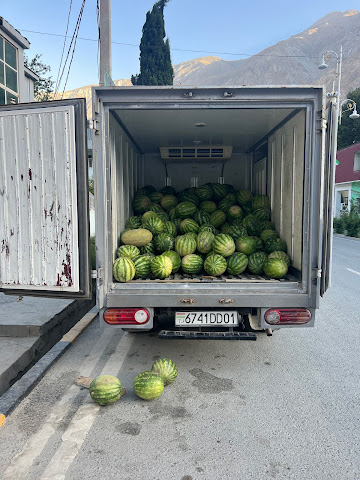Friendly man on the Pamir HW
The Taliban, whose roots are in Pakistan (Quetta city), is not so big a subject in Tajikistan, despite being a river crossing away. The Pamirs and Hindu Kush ranges make the Afghani border impassable for vehicles and people while a single dirt lane parallels our road on the opposite side of the Panj river providing a connection to the Taliban villages we occasionally pass along the highway. I see the infrequent motorcycle but never a car and imagine a truck could not cross raising a question : how do these outposts exist ?
Aziz grunts as he points out a Taliban check point.
The Taliban ruled most of Afghanistan from 1996-2001 until the Americans knocked them out. It began as a student led revolution (Taliban means "students") from the 1994 Afghanistan civil war and spread in the Islamic schools - it was Mullah Omar who shifted the movement away from the Mujahideen warlords into a form of government espousing an extreme interpretation of Islamic law ("Sharia") which resulted in massacres against Afghan civilians, harsh discrimination against minority religions and people, denial of UN food supplies to starving people, banning women from school, and the destruction of cultural monuments.
In 1997, our trip to Pakistan leading us into the mountainous Northern Territories was nearly killed as the Taliban destroyed the ancient Budha statues of Afghanistan and their nomadic armed camps, and refugees, spilled into the region alongside the KKH, triggering fear that all of Pakistan could be next.
The Taliban did not disappear during the American occupation, retaking Kabul following the US departure in 2021. The Taliban is not recognised by any country and likely supported by China, Russia and Iran and others.
Panj river, Pamirs





































